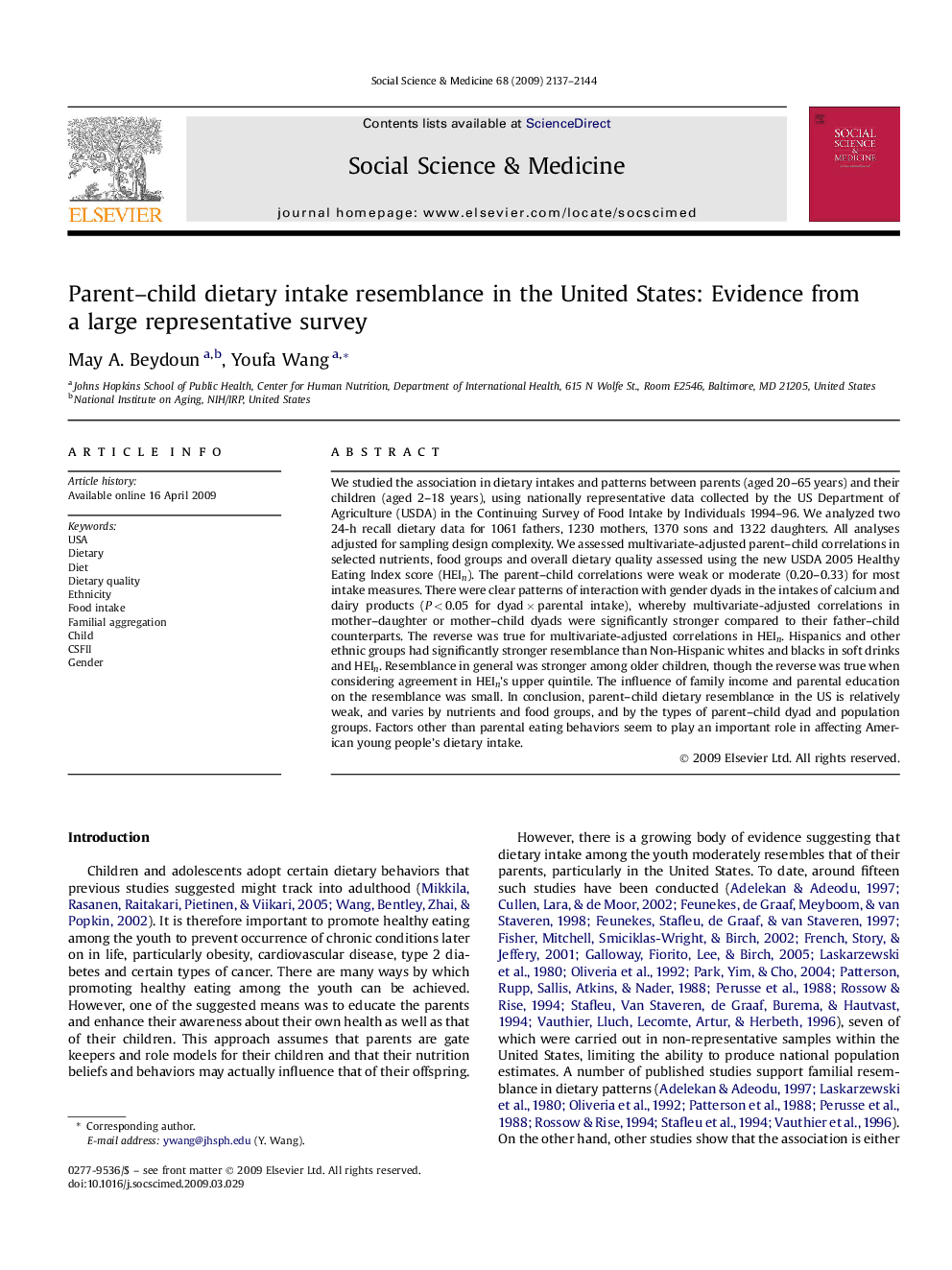| Article ID | Journal | Published Year | Pages | File Type |
|---|---|---|---|---|
| 953787 | Social Science & Medicine | 2009 | 8 Pages |
We studied the association in dietary intakes and patterns between parents (aged 20–65 years) and their children (aged 2–18 years), using nationally representative data collected by the US Department of Agriculture (USDA) in the Continuing Survey of Food Intake by Individuals 1994–96. We analyzed two 24-h recall dietary data for 1061 fathers, 1230 mothers, 1370 sons and 1322 daughters. All analyses adjusted for sampling design complexity. We assessed multivariate-adjusted parent–child correlations in selected nutrients, food groups and overall dietary quality assessed using the new USDA 2005 Healthy Eating Index score (HEIn). The parent–child correlations were weak or moderate (0.20–0.33) for most intake measures. There were clear patterns of interaction with gender dyads in the intakes of calcium and dairy products (P < 0.05 for dyad × parental intake), whereby multivariate-adjusted correlations in mother–daughter or mother–child dyads were significantly stronger compared to their father–child counterparts. The reverse was true for multivariate-adjusted correlations in HEIn. Hispanics and other ethnic groups had significantly stronger resemblance than Non-Hispanic whites and blacks in soft drinks and HEIn. Resemblance in general was stronger among older children, though the reverse was true when considering agreement in HEIn's upper quintile. The influence of family income and parental education on the resemblance was small. In conclusion, parent–child dietary resemblance in the US is relatively weak, and varies by nutrients and food groups, and by the types of parent–child dyad and population groups. Factors other than parental eating behaviors seem to play an important role in affecting American young people's dietary intake.
